INTRODUCTION
When the negative reactions to life's situations become repetitively intense and frequent we develop symptoms of depression. Life throws up innumerable situations, which we greet with both negative and positive emotions such as excitement, frustration, fear, happiness, anger, sadness, joy et al. Depression is prevalent among all age groups, in almost all walks of life. In our everyday life we sometimes come across the term depression.
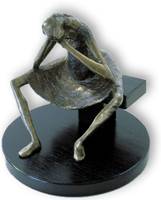
YOGA AND DEPRESSION
Yoga can help greatly in the treatment of anxiety and depression. The breathing exercises of yoga termed as pranayam, (breath exercise) help in treatment of depression as it provides better pumping of blood to various organs of the upper part of the body so that the brain has increased supply of blood as well as oxygen, which helps in rejuvenating the brain and keeps the body active. Yoga helps in providing freedom from the negative thoughts and creates an atmosphere of positivity all around.
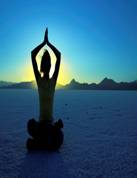
YOGA POSES FOR DEPRESSION
Fish Pose
Fish pose is another important yoga posture which helps in providing relief from tension and relaxes the mind and the body. It eases the pressure on the mind and provides support to the back and the shoulders. It is a comfortable Yoga pose which does not cause strain to the other organs of the body.
Mountain Pose
This is a standing pose. This pose is closer to meditation in that it can help you experience stillness and your own stationary power. Plus, it’s a good way to start just about any Yoga exercise. Stand perfectly still, feet together, arms at your side. Keep your back straight and your hips in cat tilt or tilt your hips forward.
Sun Salutation
Sun Salution is one of the more common postures within Yoga. This particular exercise not only stretches your spine and joints, but also works to regulate your breathing, calm your mind, and energize your body. Generally, Sun Salutation is used to begin a set of Yoga exercises. You can use it to begin your day.
Bow pose
The alternating stretching and releasing of the abdominal muscles increases blood flow to this area and aids all sorts of digestive disorders and discomforts. The Bow works all parts of your back simultaneously. The pose is so named because as you hold it, your body is bent back like a bow and your arms are held straight and taut like a bowstring.
Relaxation Pose
There are three parts to proper relaxation - physical, mental and spiritual relaxation. Relaxation Yoga Pose relaxes your body and mind, and makes you feel refreshed after doing the asanas and the pranayamas.This is why it is an essential part of Yoga practice.
Shoulder Stand Pose
This yoga pose is for thyroid & parathyroid glands, located in the neck region, since due to the firm chin-lock in sarvangasana their is increased fresh blood supply to this glands. This ample supply of blood increases their working efficiency. These glands regulate protein, carbohydrate and fat metabolism, affecting how human cells use energetic compounds.
YOGA ASANAS FOR DEPRESSION
SIMHASANA
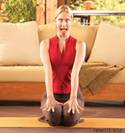
This is a wonderful pose for gaining courage and lightening your emotional load; the facial expressions involved are guaranteed to boost your mood, especially if you perform this pose in front of a mirror.
Steps
• Kneel on the floor; keep your knees about shoulder-width apart.
• Sit back on your heels; your calves should be flat on the floor.
• Spread the knees apart a little further; only move them as far as is comfortable.
• Straighten and lengthen the back and shoulders; sit up tall.
• Without rounding the shoulders, place your hands loosely on your knees.
• Inhale and lean forward slightly without compromising your straight spine.
• Stretch your mouth and jaw open as wide as possible. Extend your tongue and cross your eyes by looking at the tip of your nose; also tense and straighten your fingers out from their resting place on the knees.
• Hold this position for one breath and then relax; lean back and let your fingers drop back to your knees. Close the mouth and eyes.
• Repeat this posture at least three times with a short break in between each repetition.
MATSYASANA
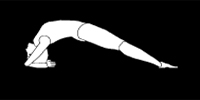
This is a great chest-opener; many people who have depression coupled with anxiety often have feelings of tightness or pressure in the chest—this pose can help ease the pressure.
Steps
• Lie flat on your back, either on a mat or on a carpeted floor. Keep your knees straight and keep your feet together with toes pointed to the ceiling.
• Slide your hands under your thighs and buttocks. This motion should cause your chest to bow upward slightly.
• Bend the elbows and push them into the floor; use the bend of the elbows and arms to raise the chest higher, keeping the chest arched upward.
• When the chest is arched as high as possible, drop your head and rest the very top of your head on the floor. Your chin should point to the ceiling.
• While in this posture, breathe deeply and really enjoy the chest expansion. Hold this position for as long as is comfortable.
BALASANA
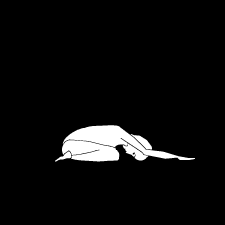
Child's pose is a comforting, peaceful asana. Staying in this position is not only relaxing, but also promotes a feeling of safety and security.
Steps
• Kneel on the floor, and then sit directly onto your heels.
• Shift your knees until they are a little more than hip-width apart.
• Bend forward at the hip; bring your chest to rest between your thighs.
• Keep your buttocks in contact with your heels and rest your forehead on the floor. If this is uncomfortable, rest your forehead on a cushion or folded blanket—make sure it is high enough for you to be comfortable.
• Stretch your arms out in front of you on either side of your head. Lengthen the muscles as far as you can, really give a good stretch! Then slide your arms back to your sides, palms up and relax.
• Remain in this pose for as long as possible. Breathe deeply and relax into the posture.
VIRABHADRASANA
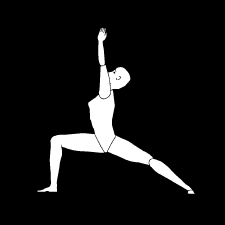
This is a very easy asana, but also a very powerful one. Warrior I can help you feel more grounded. You can gain equilibrium with this pose, both mentally and physically.
Steps
• Stand tall with good posture and plant your feet about shoulder-width apart.
• With your right foot, take a large step forward into a lunge; keep the left foot firmly planted. Do not turn or rotate the hips.
• Your right knee should be bent and you should keep the knee located directly above the ankle. You should feel a good stretch in the calf muscle of the left leg. If not, slide the left foot back an inch or so.
• After achieving a good strong lunge, raise the arms above your head. Really stretch them to the ceiling; feel that stretch all the way to your fingertips. Relax a bit, keeping the arms up, and turn the palms facing each other.
• To deepen the stretch, carefully arch the back and look at the ceiling. Repeat this posture at least once using the left leg for the lunge.
JANUSIRSASANA
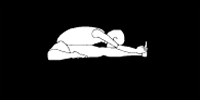
The strong stretch helps in stimulating and activating the mind. The stretch of the spine and the chest opens up the inner dormant confidence that combats depression.
Steps
• Sit on the floor, with legs stretched straight in the front.
• Bend the left knee and place the left heel against the inner side of the left thigh near the perineum. Try and push the left knee as far back as possible.
• Bend forward and stretch the arms towards the right foot and hold it. First catch the toes of the right foot, then gradually catch the sole and finally catch the wrist of one hand with the other, beyond the outstretched foot.
• Keep the right leg stretched throughout by tightening the knee.
• Exhale, move the trunk forward by bending the elbows, and rest the chin beyond the right knee. Stay in this position with deep breathing from half a minute to a minute.
• Inhale, raise the head and trunk, straighten the arm and gaze up for a few seconds, extending the spine and trying to make it concave.
• Release the hand grip on the right foot, straighten the left leg.
SHAVASANA
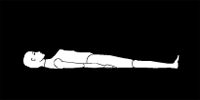
The benefits of this asana are truly endless. Nothing beats a good bit of relaxation. Do this asana anytime you feel upset or blue. If it’s hard to get out of bed in the morning to face the day, use this posture to give you a little better perspective. If you suffer from insomnia, this is a perfect way to end the day..
Steps
• Lie on your back on the floor. Spread the arms out to a 45 degree angle from your sides. Let your legs drop open.
• Keep your head resting comfortably.
• Close your eyes and breathe deeply. Each breath should expand both the chest and belly. Allow your entire body to feel heavy and soft; literally try to relax into the floor.
• Mentally look for places where your body is tense. Should you find tension, focus on that part of the body, tense it and then release. Wiggle your fingers and toes to remove any pressure or stress.
• Try to clear your mind. Continue to breathe deeply.
• Enjoy a conscious state of deep relaxation.
ASTROLOGY
'Yoga' is a Sanskrit term which means 'to unite'. What is being referred as the 'Yoga'’ in English, is more commonly known as 'Asana' in Sanskrit, which means different physical postures and poses. It is seen that people of a particular sun sign find it beneficial when they practice certain yoga asanas. According to astrological reports for yoga asanas the above mentioned asanas are said to be effective for those who come under the following zodiac sign.
• PISCES